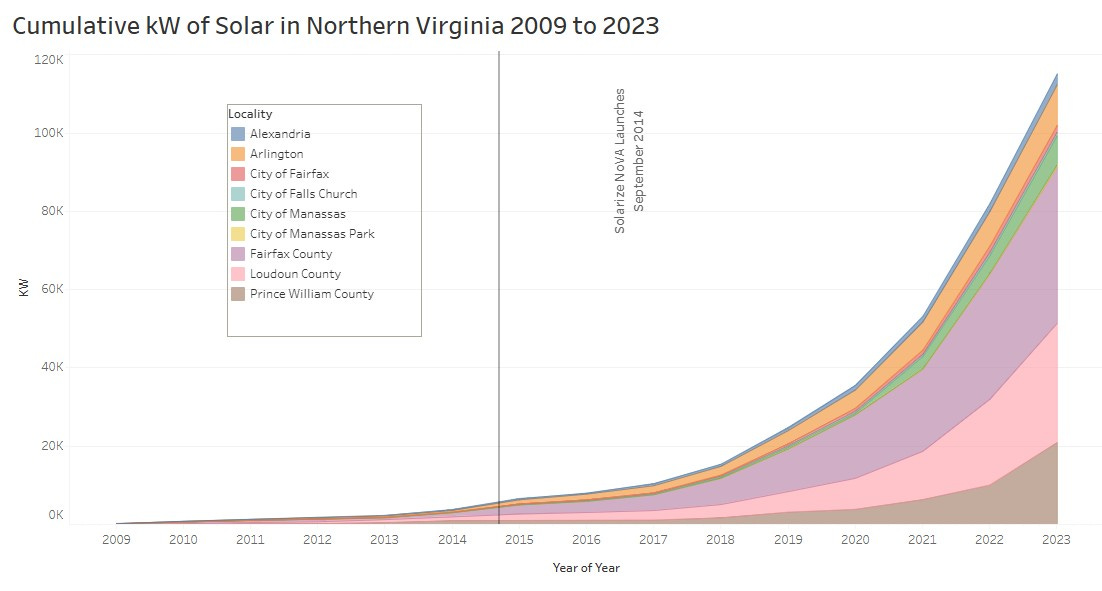House Reconciliation Bill Threatens Residential Solar Growth
Bill Passed By House Would Eliminate the Investment Tax Credit (ITC) for Residential Solar by End of this Year - Residential Sector Represents 97% of Solar Installs in United States
History of the Solar Investment Tax Credit
The federal solar Investment Tax Credit (ITC) was first established as part of the Energy Policy Act of 2005, signed into law by President George W. Bush on August 8, 2005. When initially adopted, the ITC was set at a rate of 30% for both residential and commercial solar installations. The ITC has been extended a number of times on a bipartisan basis.
The Reconciliation Bill adopted by the House on May 22 would end the ITC for residential projects at the end of calendar year 2025 which is 9 years earlier than in current statute.
Threatening Local Jobs and Consumer Choice
Eliminating the residential solar ITC would pose several significant threats to the solar industry:
Demand Reduction: The 30% tax credit substantially reduces the upfront cost of solar installations for homeowners. Without it, the payback period for residential solar systems would extend significantly, making solar less attractive which could lead to a sharp drop in residential installations.
Market Contraction: The residential sector represents 97% of solar installs in the United States. A significant decline in residential demand would shrink the overall market size, affecting the entire solar value chain from manufacturers to installers. Additionally, according to the United States Energy Information Administration, small scale solar accounts for one-third of solar power capacity.
Job Losses: The solar industry employs hundreds of thousands of workers, many in installation, sales, and related services focused on the residential market. Reduced demand could lead to widespread job losses, particularly affecting local solar companies and installers. According to the Solar Energy Industry Association there are nearly 5,000 solar related jobs in the Commonwealth of Virginia.
Supply Chain Disruption: Lower demand could disrupt solar supply chains, potentially leading to oversupply, price volatility, and reduced investment in manufacturing capacity. This could affect domestic solar manufacturers.
Slower Cost Reductions: Reduced market size could slow the pace of cost reductions that come from economies of scale and learning curve effects, potentially making solar less competitive in the long term. According to the SEIA in Virginia prices for solar have fallen 42% over the last 10 years.
Regional Economic Impact: States with strong solar markets and supportive policies could see significant economic disruption, affecting local businesses, tax revenues, and clean energy goals.
According to the Virginia Department of Energy , “Today about 13% of Virginia's total power is generated from solar plants (EIA, 2024), with more on the way as additional large scale solar facilities come online over the next decade”. One such facility is a 100 MW solar array with 50 MW battery located at the Dulles International Airport.
Costing the Ratepayer
A reduction in solar deployment due to ITC elimination could increase energy costs for consumers through several mechanisms:
Loss of Competitive Pressure: Solar energy has become one of the cheapest sources of electricity generation. Reduced solar deployment means less competitive pressure on traditional utilities, potentially allowing them to maintain higher rates without the threat of customer defection to solar alternatives.
Reduced Energy Independence: Over 20-25 years, solar typically can save homeowners tens of thousands of dollars compared to continuing utility payments. Paired with a properly sized battery system a homeowner can operate his/her home without depending on electricity from their utility.
Lost Peak Demand Management: Residential solar helps reduce strain on the grid during peak demand periods (typically when solar generation is highest). Less distributed solar means utilities will need to invest more in expensive "peaker" plants or grid infrastructure, costs that are passed on to all ratepayers.
Supporting Solar in the Region
The Northern Virginia Regional Commission and its partner local governments have long been supporters of renewable energy. NVRC along with its local governments and the Local Energy Alliance Program have operated a Solarize NoVA program to assist homeowners and businesses to go solar. That project from 2014 through 2024 has resulted in more than 1,000 contracts for solar with local installers with a contract value of more than $27 million. Overall solar in Northern Virginia has grown from 51 arrays in 2008 to 12,274 arrays in 2023.

About the Northern Virginia Regional Commission
NVRC is a consortium of thirteen local governments representing more than 2.6 million residents. While only 3% of Virginia's land mass, Northern Virginia has a GDP of $302 Billion which is 42% of the GDP of the Commonwealth of Virginia. Northern Virginia’s GDP is larger than 24 states and the District of Columbia and if a country would be the 48th largest economy in the world.



